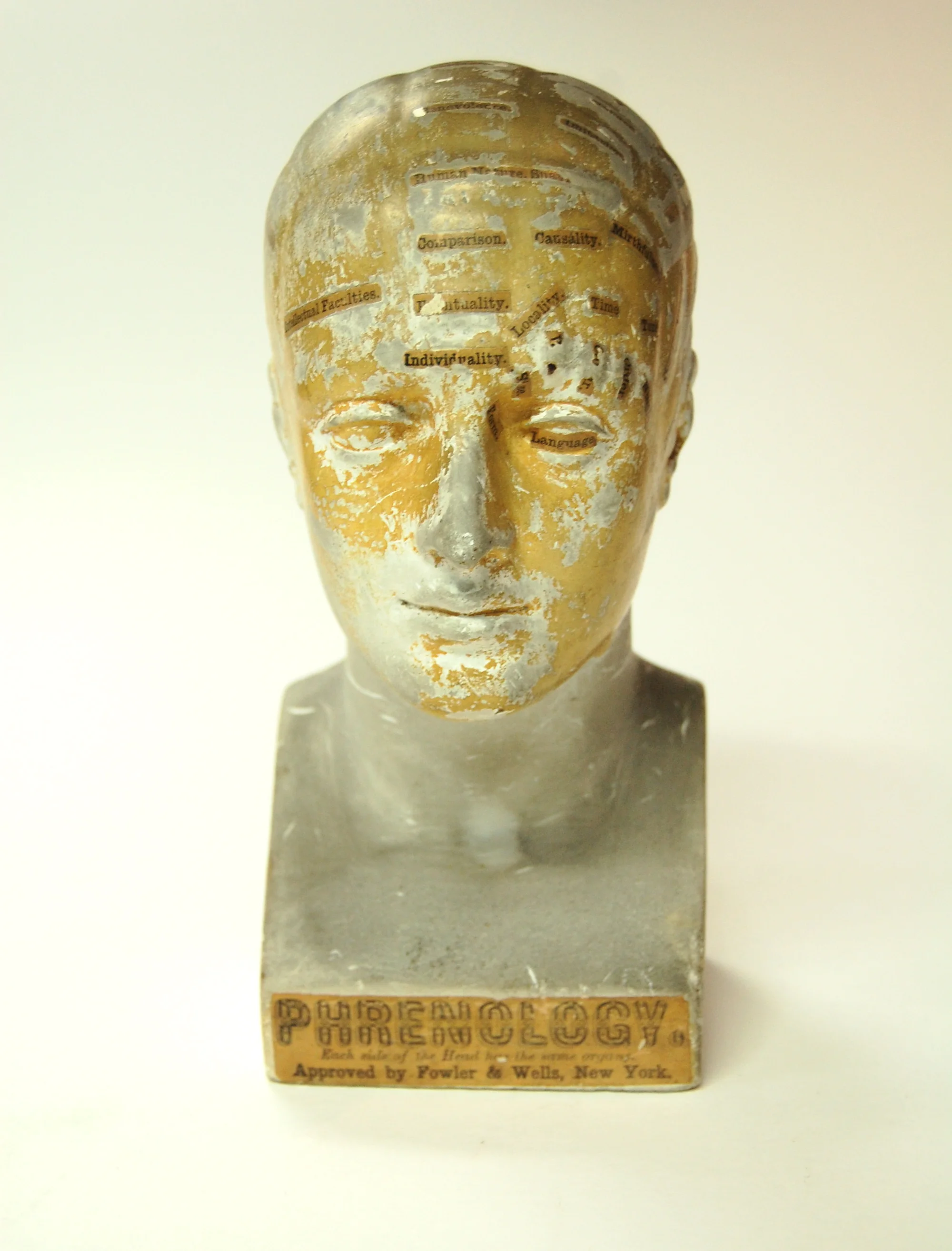




Phrenology is a now-discredited theory once conceived and popularised by Viennese physician Franz Joseph Gall (neuroanatomist and physiologist, 1758-1828) in the late 1700s. Gall came up with the original idea in 1796. His hypothesis stated that the bumps and indents on the outer skull were indicative of mental faculties within the brain. He based his theory upon five main principles:
1. The brain is the organ of the mind.
2. Mental ability can be analysed into a definite number of independent faculties.
3. The faculties are innate, each seated in a definite section of the surface of the brain and measurable on the outside of the skull.
4. The size of each section is a measure of the degree to which a particular characteristic or personality trait affects an individual. i.e. a large bump on the left side of the head above the ear in the ‘destructive’ region would indicate that that person has a particularly destructive characteristics.
5. The correlation between the outer surface of the skull and the contour of the brain-surface underneath was enough that the outer skull could be examined to identify mental and emotional faculties without having to examine internally.
Following this, examination of the surface of the head supposedly enabled the doctor to determine a patients personality traits, character and criminality. This practice was called ‘reading bumps’. The phrenological model of the head was a popular tool of the trade for the Victorian doctor who subscribed to Phrenology. The model head was visibly divided into different regions of different shapes and sizes. The doctor could examine a patient and refer to the model to identify what a particular patients’ bumps and indents supposedly indicated.
Gall justified his theory under the assumption that areas of the brain (which have specific functions) that are used more regularly will grow, like a well exercised muscle, and therefore be visible on the outer skull. However, it is completely inaccurate to attribute a persons’ character to their physical features in this way.
Phrenology is a distinct from craniometry – the study of skull size, weight and shape, as well as physiognomy - the study of facial features. Phrenologists referred to Phrenology as ‘the only true science of the mind’ despite a lack of scientific research to support the theory.
This object is on display in the Mental Health display case at the George Marshall Medical Museum.